#OnlineCommunication
Explore tagged Tumblr posts
Text
The Challenging Future of Digital Interactions: What Lies Ahead

The future of online interactions is evolving rapidly. Explore the challenges businesses face in adapting to digital environments, from data security to user experience in building relationship. Stay ahead by understanding emerging trends and preparing your business for the future of real-life connections and experiences, encouraging users to engage in activities, meet in person, and form authentic relationships based on shared interests.
Read more: https://www.territie.com/en/blog/the-challenging-future-of-digital-interactions
#DigitalFuture#DigitalInteractions#OnlineCommunication#RelationshipApps#UserExperience#TrustedDatingApp
0 notes
Text
How does digital technology influence human relationships?
Digital technology has a profound impact on human relationships in various ways:
1.Connectivity: Social media, messaging applications, and video chats allow people to stay in touch over large distances, fostering and preserving long-distance relationships.
2. Instant Communications: By enabling prompt exchanges and breaking down geographical and temporal obstacles, real-time communication technologies promote instantaneous interaction, which can improve relationships.
3. Social Media: Websites such as Facebook, Instagram, and Twitter provide means of celebrating life events, exchanging updates, and preserving social connections. They may, however, also result in flimsy relationships and lower the caliber of face-to-face exchanges.
4. Online Dating: The Leading Online Dating Site for Singles & Personals and Tinder, among other apps and websites, have revolutionized the way individuals meet and start romantic relationships by making it simpler to identify mates who satisfy particular requirements.
5. Privacy and Boundaries: The way boundaries are managed in relationships can be impacted by the blurring of personal and professional spheres due to digital communication.
6. Virtual Communities: People can interact with others who share their passions and offer support to one another through online forums and interest groups, which creates new kinds of partnerships and communities.
7. Mental Health: Although technology can offer networks of support, overuse or dependence on digital contacts can occasionally result in problems like social isolation or a need for virtual approval.
#-#DigitalRelationships#SocialMediaImpact#OnlineCommunication#VirtualConnections#DigitalInteraction#TechAndRelationships#SocialNetworking#VirtualFriendship#OnlineDating#DigitalEmpathy
0 notes
Text

Understanding the Meaning of YW
YW stands for "you're welcome." It is commonly used as a response when someone expresses gratitude by saying "Thank you." This abbreviation is frequently used in text messages and social media to convey politeness and acknowledgment in a concise manner.
0 notes
Text
GIFs Unleashed: Elevating Online Conversations with Visual Expression
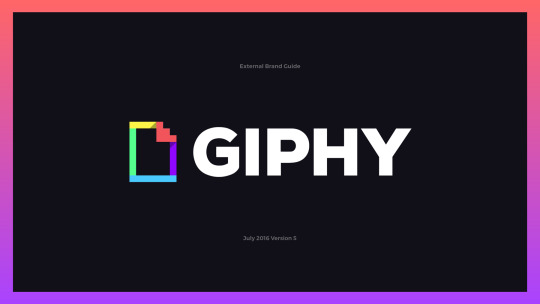
Introduction
GIFs, or Graphics Interchange Format images, have become an integral part of online communication. Over the years, they have evolved from simple, looping animations to dynamic visual expressions that capture and convey emotions, reactions, and narratives in a compact, engaging format. The rise in popularity of GIFs can be attributed to their ability to add a layer of visual expression to text-based conversations. Unlike static images or lengthy videos, GIFs strike a balance by providing a brief, animated glimpse that is both eye-catching and informative. They enhance online conversations by making them more lively and interactive, allowing users to express feelings and reactions more vividly and succinctly. Whether used in social media posts, messaging apps, or online forums, GIFs have revolutionized the way we communicate, making digital interactions more engaging and expressive.
The Evolution of GIFs

The journey of GIFs, or Graphics Interchange Format images, began in 1987 when CompuServe introduced the format to provide a color image format for their file downloading areas, replacing their earlier RLE format which was black and white. Since their inception, GIFs have undergone significant transformations and have become a staple in digital communication. History and Development The original GIFs were simple, static images. However, the format's ability to support animations through multiple image frames quickly caught on, and animated GIFs became popular for their ability to display motion in a lightweight file. Early internet users embraced GIFs for their ability to add visual interest to websites and email chains without requiring heavy bandwidth. In the late 1990s and early 2000s, GIFs were widely used in web design, often as decorative elements like "Under Construction" signs and dancing icons. However, as web design evolved and other technologies like Flash became more prominent, the use of GIFs waned. The resurgence of GIFs came in the late 2000s with the rise of social media platforms and content-sharing websites like Tumblr and Reddit. These platforms provided the perfect environment for GIFs to thrive, thanks to their support for short, looping animations that could quickly convey reactions, emotions, and snippets of popular culture. Milestones in the Evolution of GIFs The evolution of GIFs has been marked by several key milestones: - 1987: Introduction of the GIF format by CompuServe. - 1995: Netscape Navigator adds support for looping animations, boosting GIF popularity. - 2000s: Decline in GIF usage due to the rise of Flash and other multimedia formats. - 2010s: GIFs experience a renaissance with social media platforms like Tumblr, Twitter, and Reddit embracing the format. - 2013: Facebook begins supporting GIFs, further embedding them in digital communication. - 2014: The launch of GIPHY, a search engine for GIFs, makes finding and sharing GIFs easier than ever. - 2016: GIF becomes the Word of the Year according to the Oxford Dictionary, signifying its cultural impact. Today, GIFs are more than just fun animations; they are a significant part of internet culture. They are used for a variety of purposes, including communication, marketing, and entertainment. The format's ability to quickly convey complex emotions and ideas has made it a powerful tool for digital expression. As the internet continues to evolve, so too will the role of GIFs. With advancements in technology and the growing importance of visual communication, GIFs are likely to remain a key component of how we share and express ourselves online.
The Impact of GIFs on Online Communication
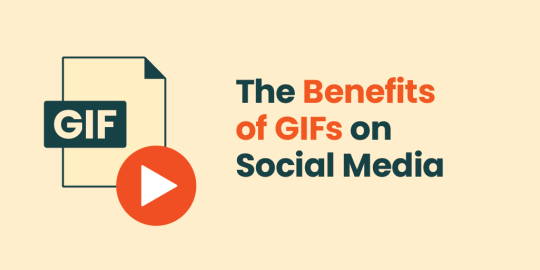
GIFs have significantly transformed digital interactions, making online communication more dynamic, expressive, and engaging. Their ability to convey emotions, reactions, and humor in a concise format has revolutionized how people interact on social media, messaging apps, and online forums. Transformation of Digital Interactions GIFs have altered the landscape of online communication in several ways: - Enhancing Conversations: GIFs add a visual and emotional layer to text-based conversations. They can express reactions like joy, surprise, or frustration more vividly than words alone. - Breaking Language Barriers: Since GIFs are visual, they can be understood universally, helping to bridge language gaps and foster better communication across different cultures. - Increasing Engagement: On social media, GIFs attract attention and engagement. Posts and comments with GIFs are more likely to be shared, liked, and commented on. - Providing Quick Responses: GIFs allow users to respond quickly and effectively, often encapsulating complex emotions or responses in a simple, looping animation. - Adding Humor: GIFs are often used to inject humor into conversations. Memes and funny GIFs are widely shared, bringing levity to digital interactions. Examples of Popular GIFs in Internet Culture Over the years, many GIFs have become iconic and are deeply embedded in internet culture. Here are some notable examples: GIF Description Usage
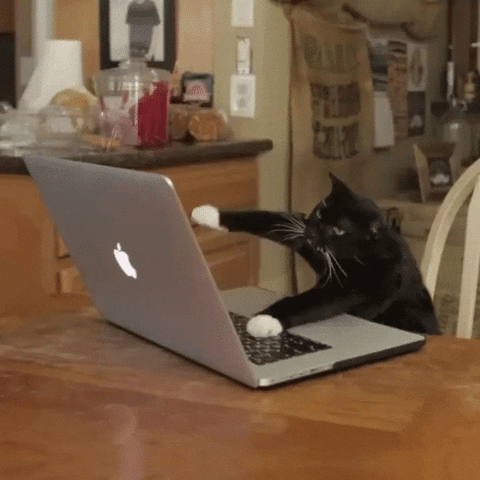
Excited Cat: A GIF of a cat pawing excitedly at the screen. Used to express excitement or anticipation.
Michael Jackson Eating Popcorn: A scene from Michael Jackson's "Thriller" music video. Often used in discussions to signify that someone is watching a drama or argument unfold.

Confused John Travolta: A GIF of John Travolta from "Pulp Fiction" looking around confusedly. Used to express confusion or lack of understanding in a conversation.
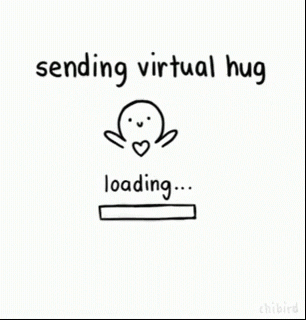
Baby Yoda Sipping Soup: A GIF of Baby Yoda (Grogu) sipping soup from "The Mandalorian". Used to express a calm or nonchalant reaction to ongoing drama. These popular GIFs highlight how certain visuals can become universally recognized symbols in digital communication, transcending their original context to take on new meanings. They are powerful tools for expression, enabling users to communicate more effectively and with greater emotional depth. In conclusion, GIFs have reshaped the way we communicate online, making interactions more engaging, expressive, and culturally rich. As digital communication continues to evolve, GIFs will undoubtedly remain a vital component of our online conversations.
Creating and Sharing GIFs
GIFs are not only fun to use but also simple to create and share. With a variety of tools and platforms available, anyone can make their own GIFs and enhance their online conversations. Tools and Platforms for Creating Your Own GIFs Several tools and platforms make creating GIFs easy and accessible: - GIPHY: A popular platform for finding and creating GIFs. GIPHY offers a user-friendly interface to convert videos and images into GIFs. - Tenor: Another well-known platform that allows users to create and share GIFs. It also integrates with various messaging apps for easy sharing. - Photoshop: Adobe Photoshop provides advanced tools for creating high-quality GIFs from images or video clips, offering greater customization options. - Imgur: Known for its large repository of user-generated content, Imgur also offers GIF creation tools that are straightforward and effective. - EZGIF: An online GIF maker that provides various editing options, including cropping, resizing, and optimizing GIFs. Step-by-Step Guide to Making a GIF from Video Clips or Images Creating a GIF can be done in a few simple steps. Here's a basic guide using GIPHY: - Select Your Source: Choose a video clip or a series of images you want to convert into a GIF. You can upload a file from your device or paste a URL from platforms like YouTube. - Upload to GIPHY: Go to GIPHY's GIF Maker, and upload your selected video or images. - Edit Your GIF: Trim your video to the desired length (typically 2-6 seconds) and add any captions or effects you want. GIPHY allows you to customize the start and end times, add text, and apply filters. - Create Your GIF: Once you're satisfied with the edits, click "Create GIF". GIPHY will process the file and generate a shareable GIF. - Save and Share: Save your GIF to your device or share it directly from GIPHY to social media platforms, messaging apps, or embed it on websites. Tips for Optimizing GIFs for Different Platforms To ensure your GIFs are optimized and shareable across various platforms, consider the following tips: - Keep It Short: GIFs are most effective when they are brief. Aim for a duration of 2-6 seconds to keep viewers engaged. - Reduce File Size: Large GIF files can be slow to load and share. Use tools like EZGIF to compress your GIFs without losing quality. - Adjust Dimensions: Resize your GIFs to fit the platform’s preferred dimensions. For example, square GIFs (1:1 aspect ratio) work well on Instagram, while landscape GIFs (16:9) are better for Twitter. - Use Captions Sparingly: Adding text can enhance your GIF, but avoid overcrowding it. Keep captions short and to the point. - Test for Compatibility: Ensure your GIFs work across different devices and browsers. Test them on mobile and desktop platforms to confirm they display correctly. By using these tools and following these tips, you can create high-quality, engaging GIFs that enhance your online interactions and make your conversations more expressive and fun.
Best Practices for Using GIFs
GIFs are a versatile form of expression that can enhance online communication when used appropriately. However, it's essential to follow certain guidelines to ensure that GIFs are used effectively and respectfully in various contexts. Guidelines for Using GIFs Appropriately Consider the following best practices when using GIFs: - Know Your Audience: Understand the preferences and sensibilities of the people you are communicating with. Use GIFs that are relevant and relatable to your audience. - Consider the Context: Use GIFs that are appropriate for the context of the conversation. In professional settings, stick to GIFs that are neutral or convey positive sentiments without being overly casual or humorous. - Use Sparingly: Avoid overusing GIFs, especially in professional or formal communications. Use them to punctuate key points or add emphasis, rather than saturating the conversation with animations. - Match Tone and Mood: Choose GIFs that align with the tone and mood of the conversation. For serious discussions, opt for GIFs that are respectful and reflective. For light-hearted conversations, feel free to use more playful or humorous GIFs. - Respect Boundaries: Be mindful of cultural and personal boundaries when selecting GIFs. Avoid GIFs that could be offensive or inappropriate based on cultural sensitivities, religious beliefs, or personal values. Avoiding Overuse and Ensuring Enhancement It's crucial to strike a balance and ensure that GIFs enhance rather than detract from communication: - Enhance, Don't Replace: GIFs should complement your message, not replace it. Use them to add visual interest or emphasize your point, but don't rely on them to convey your entire message. - Stay Relevant: Choose GIFs that are relevant to the conversation at hand. Random or unrelated GIFs can confuse or distract from the discussion. - Consider Accessibility: Keep in mind that not all platforms or users may support GIFs. Ensure that your message can be understood and appreciated even without the use of animations. Cultural and Contextual Sensitivity When selecting GIFs, be mindful of cultural nuances and contextual appropriateness: - Avoid Stereotypes: Steer clear of GIFs that perpetuate stereotypes or reinforce biases. Choose inclusive and culturally sensitive GIFs that respect diversity and promote inclusivity. - Respect Cultural Differences: What may be acceptable or amusing in one culture may be offensive or misunderstood in another. Take cultural differences into account when selecting GIFs, and err on the side of caution when in doubt. - Be Mindful of Language: Some GIFs may contain text or captions that are in a different language. Ensure that the text is appropriate and accurately conveys the intended message, especially if you're communicating with a multilingual audience. By adhering to these best practices, you can use GIFs effectively to enrich your online communication and create more engaging and meaningful interactions while respecting the boundaries and preferences of your audience.
GIFs in Marketing and Branding
GIFs have emerged as powerful tools for businesses and brands to connect with their audiences, convey messages, and enhance marketing campaigns. When used strategically, GIFs can captivate viewers, increase brand visibility, and drive engagement across various digital platforms. Engaging Audiences and Enhancing Marketing Campaigns Businesses and brands leverage GIFs in marketing and branding efforts in several ways: - Adding Personality: GIFs allow brands to inject personality and humor into their messaging, making them more relatable and memorable to audiences. - Increasing Engagement: Animated GIFs catch the eye and encourage interaction on social media platforms, leading to higher engagement rates compared to static content. - Conveying Messages Creatively: GIFs provide a dynamic and visually appealing way to convey messages, product features, or promotions without relying solely on text or images. - Creating Shareable Content: Well-crafted GIFs are highly shareable and can amplify brand reach as they are easily shared across social media platforms and messaging apps. - Building Brand Recognition: Consistent use of branded GIFs helps reinforce brand identity and recognition among audiences, fostering brand loyalty and affinity. Case Studies of Successful Marketing Campaigns Several brands have effectively utilized GIFs in their marketing campaigns, resulting in increased brand awareness, engagement, and conversions: Brand Campaign Impact Taco Bell Taco Bell's "Taco Tuesday" GIFs featuring their iconic menu items. Increased social media engagement and brand visibility, driving foot traffic to restaurants. BuzzFeed BuzzFeed's use of GIFs in listicles and articles to enhance storytelling and entertainment value. Higher click-through rates and shares, leading to increased website traffic and reader engagement. Netflix Netflix's promotional GIFs for new releases and original content, sparking excitement and anticipation among viewers. Increased buzz and conversation on social media platforms, driving subscriptions and viewership. Tips for Creating Branded GIFs and Incorporating Them into Social Media Strategy To effectively incorporate branded GIFs into your social media strategy, consider the following tips: - Stay True to Your Brand: Ensure that your branded GIFs reflect your brand's personality, values, and visual identity to maintain consistency and authenticity. - Keep It Relevant: Create GIFs that are relevant to your audience's interests, preferences, and behaviors to maximize engagement and resonance. - Be Creative and Original: Stand out from the crowd by creating unique and innovative GIFs that capture attention and evoke emotion. - Optimize for Platforms: Tailor your GIFs to the specifications and requirements of each social media platform to ensure optimal display and performance. - Promote Sharing: Encourage users to share your branded GIFs by integrating them into social media campaigns, contests, and user-generated content initiatives. By leveraging GIFs effectively in marketing and branding efforts, businesses and brands can create memorable experiences, foster deeper connections with their audiences, and achieve their marketing objectives in an increasingly visual and dynamic digital landscape.
The Future of GIFs
GIFs have become a ubiquitous form of expression in online communication, and their influence is expected to continue to grow in the coming years. As technology evolves and user preferences shift, several emerging trends and developments are shaping the future of GIFs. Emerging Trends in GIF Usage and Technology Several trends are shaping the future of GIFs: - Augmented Reality (AR) Integration: GIFs may incorporate AR elements, allowing users to interact with virtual objects or scenes overlaid on real-world environments. - Interactive GIFs: GIFs may become more interactive, enabling users to engage with them through gestures, clicks, or other inputs. - Customization Options: Users may have more control over GIF creation, with options to personalize animations, add effects, and tailor them to specific preferences. - Integration with Messaging Platforms: GIFs may become more seamlessly integrated into messaging apps, with features like auto-suggestion and real-time creation. Read the full article
#Branding#Digitalmedia#engagement#FutureTrends#GIFs#Marketing#OnlineCommunication#Socialmedia#technology#VisualExpression
0 notes
Text
Emoji and their meanings - 5 Emojis that Speak Louder than Words
Emojis are more than just fun. They are like a language for our feelings. They help us say more than we could with words. We will look at five special emojis that tell big stories without saying much.
Emojis changed how we talk online. They show our emotions with pictures, making chat fun. They are not just faces. They have deep meanings that sometimes words don't have.
In surveys, emojis help a lot. They give quick and clear feelings. For example, a smiley face can show happiness. A sad one can show feeling down. Emojis really help in telling how we feel.
The emojis we talk about have special meanings now. They are more than their first uses. We want to show you what they really tell us. This way, people can talk and understand each other better online.

The Evolution of Emojis
Emojis started as basic smiley faces. They were a simple way to show feelings in text. Now, they are a big part of how we talk online. Emojis are more than fun pictures. They can share deep feelings and thoughts in a simple way. They are like a universal language for people worldwide.
In surveys, people can use emojis instead of words. This helps them show their feelings better. Emojis make talking more clear and fun. They help everyone understand each other.
There are so many emojis to choose from now. You can find emojis of faces, hearts, animals, and more. This means you can always pick the best one to show how you feel.
Emojis have really changed how we talk online. They help us share our feelings better. They also make online chats warmer and more friendly. Emojis are key to better and deeper online conversations.
The Power of Emotions in Emojis
Emojis help us show how we feel. They can say a lot quickly and clearly. An eye-roll emoji shows we're annoyed. A heart-eyes emoji says we love something.
When we ask people about their experiences, we want to know how they really feel. Emojis let people share their feelings in a way that words alone can't. This way, we learn more from what everyone thinks.
Emojis really catch our eye and heart. They grab our attention and make us feel something. This helps people say what they mean in a simple, easy way.
Surveys are important for learning what people like, how they feel, and if they're happy. Adding emojis makes surveys fun and easy to answer. Then we get better information.
Emojis make it easy for people to share their feelings. Instead of long answers, they can choose emojis. This saves time and makes people more likely to answer.
Emojis show more than just happy or sad feelings. There are emojis for lots of emotions, like being excited or confused. This way, surveys get a full view of how people are feeling.
Emojis and Survey Design
Using emojis well in surveys is important. They should fit in nicely and make the survey more fun. Emojis can start a survey, ask if you're happy, or help explain a question better.
Emojis can also make people understand and feel for a situation. They can help surveys really get at how people think and feel.
Choosing the right emojis is key. They need to be ones everyone knows and fits the survey. This way, everyone gets the message clearly.
Our world keeps using emojis more every day. They're great for sharing feelings, even in surveys. This helps us learn what people really want to say.
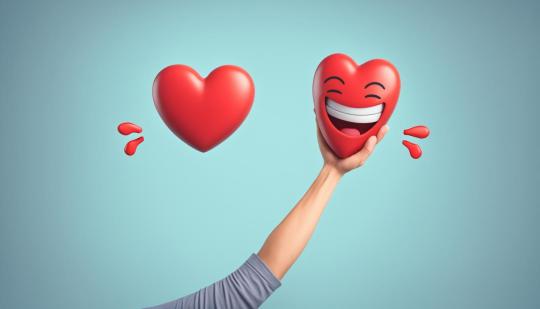
Creativity in Emoji Usage
Emojis are changing how we talk. People use them in surveys to show their feelings in a cool way. This makes talking through emojis fun and interesting.
For example, a face laughing shows you're joking. Or a thumbs-up means you like something. These small pictures make talking different and fun.
Bringing Emojis to Life
Say you want to answer with just "yes" or "no." Instead, use emojis. They make simple words become alive and colorful.
Using emojis in surveys makes them better. They show who you are. It makes answering questions more than just writing.
Also, emojis are understood by everyone. They help nothing get lost in translation. Plus, they make talking a bit easier for all.
So, using emojis in surveys is a game changer. It lets you express in a fun, brief yet creative way. Emojis make surveys more exciting for all. Keep using them and make your voice stand out more!
Emojis and Customer Feedback
Emojis are a big help in customer feedback. Instead of long sentences, people use emojis to show how they feel. This idea makes giving and getting feedback quick and satisfying.
For example, a person loved a sandwich at a shop. They use a sandwich emoji to share this. It's easy and makes feedback more fun to look at.
Enhancing the Feedback Experience
Emojis change how we talk about our feelings. They make feedback clear and personal. This helps business learn more from their customers in a fun way.
Also, emojis let people talk without words. They work for everyone, no matter the language. This makes customers and businesses feel closer, boosting happiness and trust.
The Visual Impact of Emojis
Emojis are more than fun faces in messages. They show how people really feel. A thumbs-up or a sad face does this job without extra words.
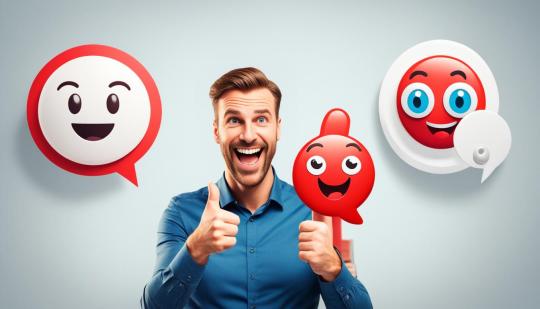
Emojis as Survey Artists
Emojis changed how we make survey answers. They turn simple words into bright art. Using emojis shows our experiences in a fun way. It makes surveys more lively.
Emojis speak the language of feelings. They cross the borders of words. This helps everyone, no matter their language, understand feelings. It's like an art show with digital pictures.
Adding emojis to surveys makes them better. It's more fun to talk about our experiences. Both people filling out surveys and the people studying them enjoy the process more. It makes words come to life in a joyful way.
The Artistry of Emojis
Emojis are like an artist's tools in surveys. They let us paint our thoughts and experiences. Each emoji has a special meaning. They help us say exactly what we feel.
Think about a trip you took. You can use a palm tree, a sun, and a smile. This shows you had fun and felt great. Emojis say more than words can.
Emojis offer many ways to express ourselves. There are faces, objects, and more. They are like a big box of colors for our feelings. This helps us share our experiences fully.
Many people now use emojis in surveys. This helps those studying the surveys learn more. They unlock deep feelings and thoughts from the people answering. Emojis make surveys an interesting and colorful story of our lives.
Emojis in surveys show more than just answers. They share our emotions and experiences. When you do a survey next, feel free to be creative. Use emojis and let your feelings and stories shine!
Emojis as a Universal Language
Emojis can be understood by everyone, no matter their language. They help people from different cultures and languages talk without words. This makes them a universal way to share feelings with others.
They are great at showing emotions like happiness, love, or sadness. For example, a smiley face emoji shows someone is happy. A heart emoji means someone loves something. And a crying face emoji shows sadness.
Emojis are so powerful because they are not limited by words. They let us share our feelings without needing to know the same language. This helps connect people all around the globe.
Emojis also help cross cultural divides. For instance, a thumbs-up emoji means approval or agreement everywhere. And a laughing emoji always shows something is funny, no matter where you are from.
They are now used in business, customer service, and public places. Emojis are easy to understand, so they work everywhere. They simplify communications for everyone.
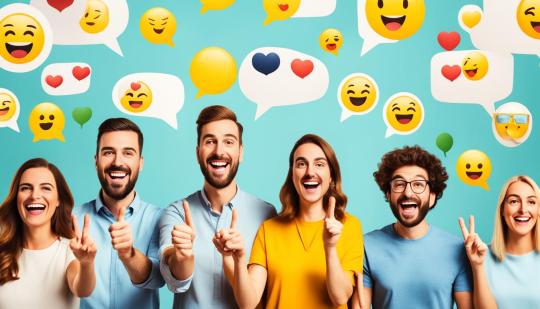
The picture above shows different emojis. They stand for many feelings and meanings. It shows how emojis are the same for all people.
To sum up, emojis are a global way to communicate. They help people connect, no matter their language. Emojis bring understanding and friendship to the world.
The Misunderstood Emojis
Emojis are a big part of today's talk. But, not all emojis say what they look like. We'll look into some emojis that often get mixed up. Knowing the right meanings helps people use emojis well. It stops them from messing up the message.
The 😅 emoji is often thought of as a crying face. But, it's really about relief or laughing when nervous. It shows someone is lightening up, not shedding tears. Don't mix it up with 😢, which really means someone is sad.
People usually think the 🙏 emoji means high-fives or praying. But it's about showing thanks or asking for a hand. Knowing the real use of 🙏 stops talks from going off track.
The 🙈 emoji looks like hiding in shame to some. But, it stands for being shy or wanting to be low key. It shows someone is a bit introverted in a cute way.
🙃 is taken as just a smiling face by many. But, it means something different. 🙃 shows when someone is being sly or cheeky. It adds a twist to the conversation.
Clarifying Misunderstood Emojis
Getting these emojis right is key to clear talks. Knowing their true meanings helps express feelings spot on. It's wise not to guess or use emojis wrong. This can lead to mess-ups in conversations.
We've tackled some of the confusing emojis. Next, we'll look at more emojis and what they truly stand for.
Decoding Emojis: A Comprehensive Guide
Understanding emojis is key for clear talks online today. This guide helps you get what different emojis mean. It shows you what messages they carry.
Faces and Smileys
Emojis in this group show lots of feelings. You'll find joy, sadness, surprise, and laughs here. It covers a big range of human emotions.
Emojis of Objects
Object emojis show many things like everyday stuff, food, and tech. They make online chats more lively. You can tell others what you like or do with them.
Symbols and Gestures
Emojis for ideas and actions include thumbs-ups, hearts, and peace signs. They share strong thoughts without words. These emojis send meaningful messages.
Unfamiliar or Obscure Emojis
This part talks about unknown emojis. Learning about them can expand your emoji language. You'll get to know more about what each symbol means.
Slang Emojis
Emojis keep changing with our words. This area looks at common slang emojis. It helps you keep with the fresh ways we talk online.
Emojis with Double Meanings
Some emojis mean more than one thing, which can confuse. Knowing their meanings well stops this. It helps you talk clearly online.
Learning what emojis mean lets you use them well. They bring life, feelings, and fun to chats. This makes talking online interesting and strong.
Emojis and Their Meanings: A List of 183 Emojis
Here, we'll show you a big list of 183 emojis with their meanings. Every emoji has its own special way to show feelings and send messages. Knowing what each emoji means helps you talk better with them.
Feeling happy, sad, or just want to make your chats more fun? This list has it all, from faces to objects. You'll see emojis for all kinds of talks.
This list will make you an emoji expert. You'll use emojis well, making your messages clear and showing your feelings right.
So, let's learn all about emojis. Keep going to see the full list of 183 emojis and what they mean:
Emoji List:
Have fun learning about all the emojis and what they stand for. Now you have a good guide to understand and use emojis well in your chats.
The Impact of Emojis in Pop Culture
Emojis are now a huge part of our culture. They affect many parts of our lives. Things like how we dress and what we buy have been changed by these small icons. They help us all talk in a way that everyone understands.
Think about all the things you see with emojis on them. There are shirts, cups, and pillows with emojis everywhere. People love showing off who they are with these symbols. Icons from smiley faces to avocados are everywhere.
But emojis are not just for looks. They are big in ads and marketing too. Companies use emojis to talk to us in a simple, emotional way. A heart or a fire emoji can make us feel strong emotions or connect with a brand.
Emojis are also part of how we use social media. Look at Instagram and Twitter, and you'll find emojis used a lot. They help people say how they feel not just in words but also with fun symbols. They make online talking more fun and personal.
In fact, emojis are now in movies and shows, weaving into stories as important characters. We've even had "The Emoji Movie." These little icons have a lot of meaning and fun for people of all ages.
For young people, emojis are a key way to chat online. Millennials and Gen Z love using emojis in their private language. This helps them connect with each other and share feelings without many words.

Emojis are a big deal in pop culture. They show the power of pictures and change how we talk online.
The Future of Emojis
Emojis are key in how we chat online. They let us show feelings simply. But what will emojis be like in the future?
As tech grows, emojis will too. They'll fit right in with new tech and trends. This will make emojis cooler and smarter.
We might see more diverse emojis soon. Many want emojis that look like everyone. This change will let people show who they really are.
What if we could use emojis in 3D thanks to AR and VR? This may soon be possible. It could make chatting even more fun and real.
AI and machine learning might help emojis, too. They could pick the best emojis for our talks. This could make chatting smoother and better.
So, emojis are here to stay. They help us talk online with spirit and ease. Look out for all the neat things coming in the future!
Conclusion
Emojis changed how we show feelings in online talking. They are great in polls and chats. With emojis, we talk better and add fun to our words. Knowing what emojis mean helps us use them well.
Emojis break the wall of different languages. They let us share deep feelings in a simple way. A happy face or a thumbs-down quickly says how we feel.
Studies show how emojis are cool in surveys. In a Nature study, they found emojis make polls better. People can say what they feel in a real way. This shows how good emojis are for talking.
#EmojiMeanings#DigitalLanguage#SocialMediaLingo#OnlineCommunication#EmotionalExpression#VisualCommunication#ModernLinguistics#DecodeTheEmoji#EmojiDictionary#HashtagTrends
0 notes
Text
In the vast realm of online communication, language takes on new forms and evolves in creative ways. One such phenomenon that has emerged is disemvoweling—an intriguing linguistic play that involves stripping words of their vowels. In this blog post, we’ll delve into the roots, purpose, and the subtle art of disemvoweling.
#AestheticLanguage#CodingLanguage#CreativeExpression#DigitalCulture#Disemvoweling#LanguageExperimentation#LinguisticPlay#OnlineCommunication#OnlineCommunities#SocialMediaTrends#frnwh
1 note
·
View note
Text
Sie möchten wissen, wie Sie die Facebook-Nachrichten von anderen lesen können?
Ich denke, dass Sie da zustimmen. Seit der Einführung der sozialen Medien erhalten viele Menschen neue Möglichkeiten, um fremd zu gehen. Im Falle eines Seitensprunges nutzen die meisten Menschen Medien wie Facebook und Whatsapp für die Kommunikation und um ihre Liebesbeziehung zu führen.
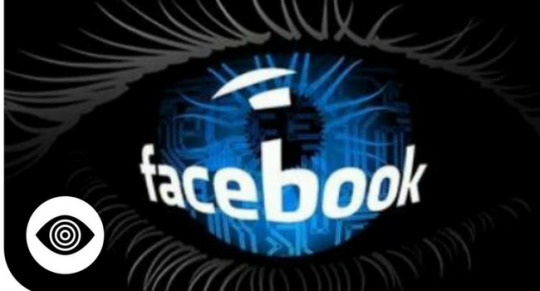
#spymasterpro#FacebookMessagingTips#MessagePrivacy#SocialMediaHacks#DigitalPrivacy#FacebookPrivacy#MessagingSecurity#PrivacyAwareness#OnlineCommunication#CyberSecurity#MessageReadingAdvice
0 notes
Text
#VideoConferencing#RemoteCollaboration#VirtualMeetings#OnlineCommunication#WorkFromAnywhere#TechInnovation
0 notes
Text
youtube
Why You NEED the OBSBOT Tiny PTZ Webcam Right Now!
#OBSBOTTinyPTZWebcam#WebcamReview#PanTiltZoom#AItechnology#VideoQuality#OnlineCommunication#ContentCreator#BusinessProfessional#Youtube
0 notes
Text
🌟 Unveiling the Ultimate Online Communication Tool: WebinarStudio Review 🌐
Tired of juggling multiple platforms for webinars, meetings, and chats? WebinarStudio brings it all under one roof! Discover its features, benefits, and more in our review. 🎙️
Read now:
1 note
·
View note
Text
Threads vs. Tweets: A Comparative Analysis of Microblogging Platforms
Microblogging has changed how we convey and share data in the computerized age. With the ascent of online entertainment stages, microblogging has turned into a well-known and strong method for offering viewpoints, sharing refreshes, and drawing in with others. Two noticeable microblogging stages that have built up some forward movement are Threads, created by Meta Stages, and Tweets, the…

View On WordPress
#ComparativeAnalysis#DigitalCommunity#DigitalEngagement#MicrobloggingPlatforms#Microinteractions#OnlineCommunication#SocialMedia#SocialMediaComparison#SocialNetworking#ThreadsVsTweets
0 notes
Text
#presentationskills#publicspeaking#virtualmeetings#onlinelearning#bodylanguage#visualaids#communicationskills#eyecontact#onlinecommunication#speakingskills#chandrasedu
0 notes
Text
#MailruTutorial#EmailEssentials#StepByStepEmail#GetStartedWithMailru#EmailTips#OnlineCommunication#DigitalSkills#EmailAccountCreation#EmailBasics#MailruAccount
0 notes
Text
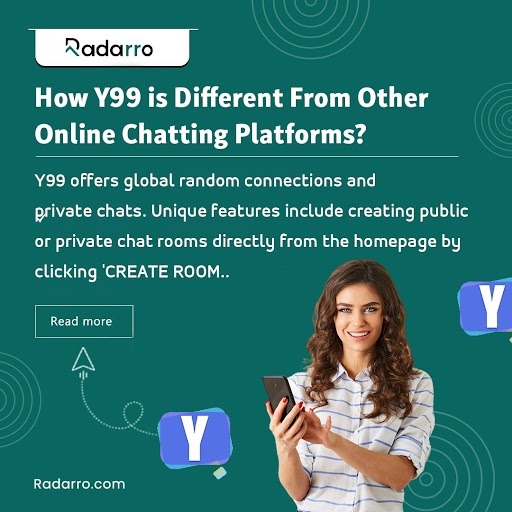
Features of Y99 Compared to Other Chat Platforms
Y99 stands out with its user-friendly interface, no registration requirement, and diverse chat options, including video and anonymous chat. Its emphasis on user privacy and security, combined with a global community, makes Y99 a unique and appealing choice for online communication.
0 notes
Text

Hey Leute! 😏 Seid ihr noch unsicher, ob ein Abo bei mir das Richtige für euch ist? Ich habe etwas für euch! 🎁 Ihr bekommt eine kostenlose Schnupperwoche! Aber seid schnell – es sind nur 50 Plätze verfügbar! ⏳🔥
#Schnupperangebot#ExklusiveInhalte#AboDeal#KostenloseWoche#JetztZuschlagen#SpecialDeal#OnlineCommunity#Fans#ErlebeEs#VerpasseEsNicht#marywet#model#sexy#so hot 🔥🔥🔥#österreich#austria#gutelaune#content creator
8 notes
·
View notes
Photo
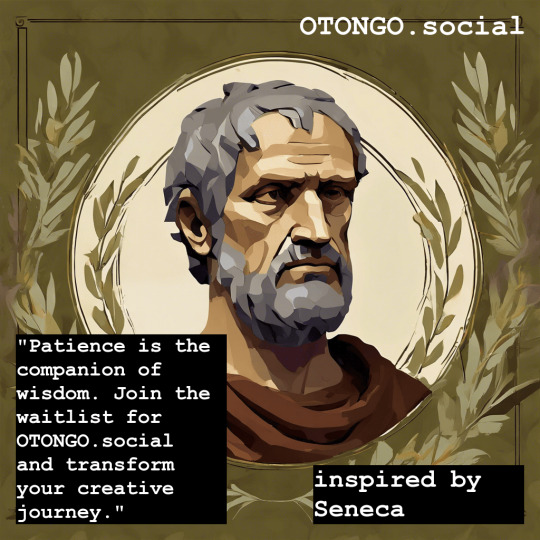
Seneca was a philosopher and playwright in ancient Rome known for his works on stoicism and ethics. His teachings emphasize resilience and the importance of a reflective life.. Get motivated to create content with www.OTONGO.social -> waitlist open.
#OTONGOsocial#CreativeJourney#Authenticity#ContentCreation#HumanVoice#BrandIdentity#Photography#VoiceRecorded#Waitlist#Inspiration#SocialMedia#Innovation#CreativeContent#OnlineCommunity#Empowerment#Storytelling#FutureOfContent#QualityOverQuantity#RealPhotography#JoinUs
2 notes
·
View notes